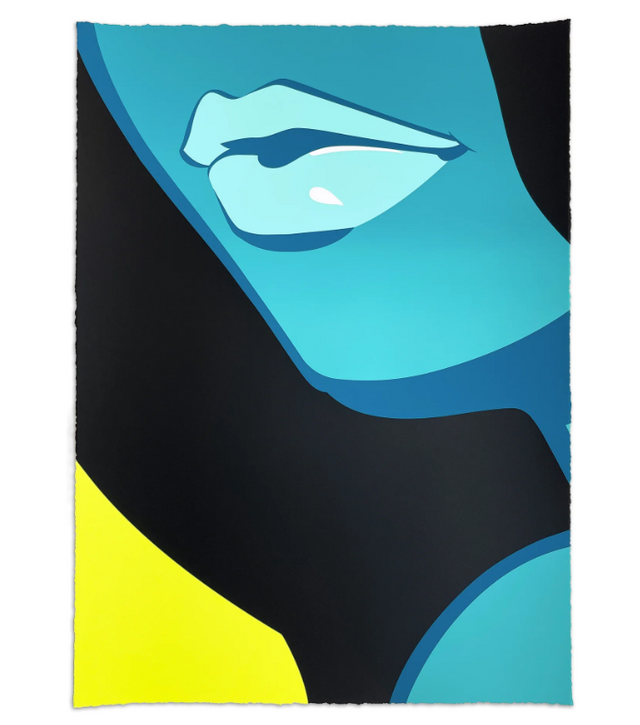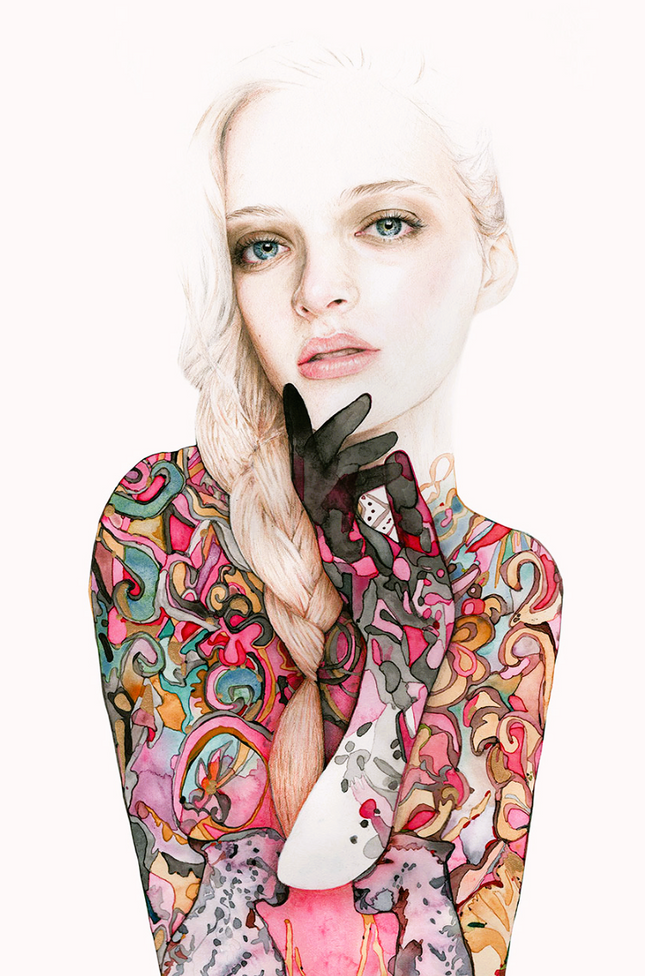
Hair

Bec Winnel Candy Giclee Print by Bec Winnel
Candy Giclee Print by Bec Winnel Artwork Limited Edition Print on Fine Art Paper Graffiti Pop Street Artist. 2014 Signed & Numbered Limited Edition of 25 Artwork Size 11.75x16.25 Colorful Tattooed Young Blond Woman in Thought. Exploring the Fusion of Femininity and Street Pop Art in Bec Winnel's Candy Giclee Print Bec Winnel is a name that resonates deeply in contemporary art, particularly within Street Pop Art and Graffiti Artwork. This Australian artist has become known for her meticulous and delicate approach to portraiture that marries traditional drawing with contemporary themes and street art sensibilities. One of Winnel's standout pieces is the 'Candy Giclee Print,' a limited edition artwork that showcases her unique blend of these artistic styles. Limited to 25 prints, each piece is hand-signed and numbered by the artist, making it a coveted item for collectors and enthusiasts of Street Pop Art. The Allure of Limited Edition Art The 'Candy Giclee Print' measures 11.75x16.25 inches, a size that is intimate yet commanding. The choice of fine art paper as a medium for this print adds to the allure, providing a tactile quality that elevates the viewing experience. Limited edition prints such as this offer a sense of exclusivity and investment, promising that only a select few can own a piece of this visual narrative. The rarity of the edition often incites a deeper appreciation and a connection with the artwork, further intensified by the artist's personal touch in her signature. Symbolism and Style in Candy Giclee Print The artwork is an evocative portrayal of a young blond woman tattooed and lost in thought. The colors are vibrant, with the tattoo patterns reminiscent of graffiti art. This melding of styles is particularly effective in conveying the personality and inner life of the subject. The tattoos, which could be perceived as a form of street art, adorn her skin like a canvas, suggesting a personal and exposed story. The subject's expression is pensive, inviting viewers to contemplate her thoughts and emotions and the cultural implications of tattoos as a form of self-expression and identity. Impact of Street Pop Art and Graffiti Artwork Street Pop Art and Graffiti Artwork have long been at the forefront of challenging traditional boundaries in the art world. They bring the vibrancy of street culture into the typically more refined gallery spaces. In the case of Bec Winnel's 'Candy Giclee Print,' there is a fusion of the delicate and the bold, the private and the public, the controlled and the free. It stands as a testament to the power of street-inspired art to infiltrate and enrich the mainstream art narrative while retaining its edge and authenticity. In the broader context of art history, pieces like 'Candy Giclee Print' are important cultural artifacts that reflect the times and social attitudes. They also underscore the significance of street art in contemporary dialogues about art and its place in society. Winnel's, with its intricate detail and emotional depth, exemplifies how the medium of street art can be as potent and profound as any traditional art form, capable of conveying complex themes and resonating on a deeply personal level with viewers. Through her work, Bec Winnel contributes to the growing recognition of Street Pop Art as a legitimate and essential form of artistic expression. Her pieces do not just hang on the walls of those who purchase them; they hang in the collective consciousness of a society increasingly acknowledging the blurred lines between high art and street art, between the gallery and the alleyway. Winnel's 'Candy Giclee Print' is not just a beautiful piece of art; it is a piece of cultural dialogue, a slice of contemporary life, and a reflection of the evolving landscape of art and expression.
$225.00


